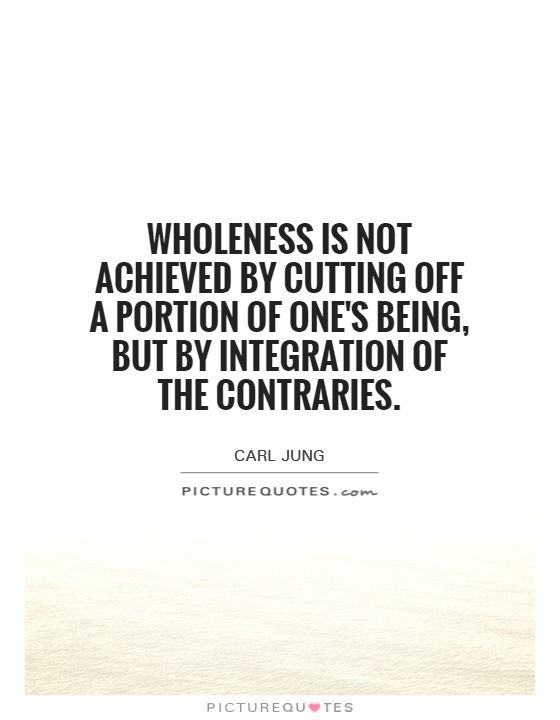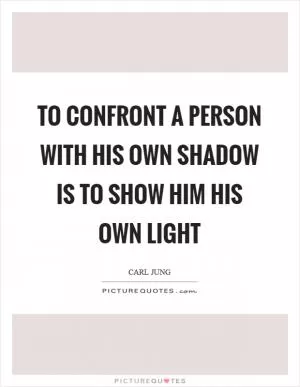Wholeness is not achieved by cutting off a portion of one's being, but by integration of the contraries

Wholeness is not achieved by cutting off a portion of one's being, but by integration of the contraries
Carl Jung, a Swiss psychiatrist and psychoanalyst, is known for his theories on the human psyche and the process of individuation. One of Jung's key concepts is the idea of achieving wholeness through the integration of the contraries within oneself. According to Jung, wholeness is not achieved by cutting off a portion of one's being, but by embracing and integrating all aspects of the self, including the unconscious and the shadow.Jung believed that each individual has both a conscious and unconscious aspect to their psyche. The conscious mind represents our everyday thoughts, feelings, and behaviors, while the unconscious contains repressed emotions, desires, and memories. Jung argued that in order to achieve wholeness, one must confront and integrate these unconscious aspects of the self. This process of integration involves acknowledging and accepting the shadow, or the darker aspects of our personality that we may not want to acknowledge.
By integrating the contraries within ourselves, we can achieve a sense of balance and harmony. Jung believed that by embracing our shadow and integrating it into our conscious awareness, we can become more self-aware and authentic individuals. This process of integration can lead to greater self-acceptance, self-compassion, and a deeper understanding of ourselves and others.
Jung's concept of wholeness through the integration of the contraries has important implications for personal growth and development. By embracing all aspects of ourselves, including the parts that we may not like or want to acknowledge, we can become more integrated and whole individuals. This process of integration can lead to greater psychological well-being, emotional resilience, and a sense of inner peace.












 Friendship Quotes
Friendship Quotes Love Quotes
Love Quotes Life Quotes
Life Quotes Funny Quotes
Funny Quotes Motivational Quotes
Motivational Quotes Inspirational Quotes
Inspirational Quotes